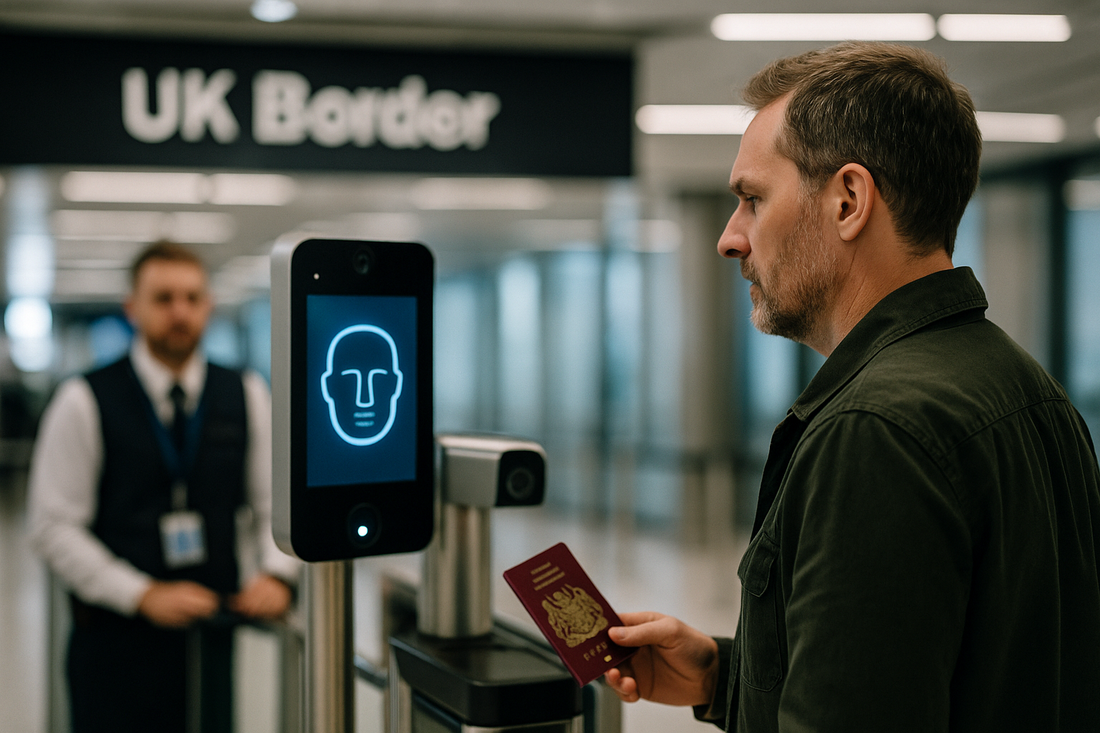Biometrics and ETA UK 2025: data, security and procedure
In 2025, the United Kingdom will strengthen border controls using biometrics , which will become a pillar of the issuance of Electronic Travel Authorizations (ETA) . This technology helps secure travelers' identities and limit fraud at the entry point.
1. What is biometrics in the context of ETA?
Biometrics refers to the set of unique biological characteristics of an individual, used to confirm their identity. In the context of an ETA application, this may include:
- fingerprints
- automated facial recognition
- iris scanning
- typing dynamics or voice (less common)
This data is processed automatically or upon entry into the territory.
2. Why is biometrics linked to ETA?
The UK Home Office uses biometrics to:
- fight against false identity documents
- improve the speed of border crossings
- strengthen security controls
Some ETA applications may therefore require biometric verification before or upon arrival in the UK .
3. When are biometrics required in an ETA application?
In most cases, the ETA procedure is 100% online. However, special cases may trigger biometric collection:
- Traveler from a country with high migration risk
- Presence of migration history in the United Kingdom
- Document matching issues
In these situations, you will be notified automatically during the application process.
4. Security of biometric data
The data is processed under the control of two legal frameworks:
- Data Protection Act 2018
- General Data Protection Regulation (GDPR)
They are :
- collected only by the Home Office or its approved service providers
- never resold or used for other purposes
- deleted or anonymized after the legal period
5. Practical advice for travelers
- Check the biometric eligibility requirements according to your nationality
- Prepare identity documents in excellent condition
- Only use official centers if a collection is requested
- Keep your receipts and consent documents
- Use a reliable platform like visaeta.com to avoid any errors.
6. Frequently Asked Questions (FAQ)
Are biometrics required to obtain a UK ETA?
Most applications are completed 100% online, with no biometric appointment required. However, biometric verification (including facial recognition) may be required depending on the traveler's profile or security checks.
What is the difference between an ID photo and biometric data?
The facial photo required in the ETA form is used for automated identity verification. "Biometric data" may also include fingerprints or other measurements if required by the Home Office.
In which cases can a biometric appointment be requested?
Migration risk profile, document inconsistencies, previous migration offense, insufficient photo quality or triggering of a manual check.
How long is biometric data retained?
They are kept for the period legally necessary under UK law (Data Protection Act 2018) and the GDPR, then deleted or anonymized.
Can I exercise a right of access or rectification of my data?
Yes. You can request access to, rectification of, or erasure of your data under the GDPR, subject to national security constraints. Details are provided on official UK government websites.
Can a non-biometric passport cause problems?
Yes. A non-biometric or damaged passport increases the risk of verification failure and biometric summons. Use a valid and readable biometric passport.
Can biometrics speed up entry to the UK?
Yes. A verified identity often makes border control easier, provided the ETA and passport information match exactly.
Is my biometric data shared with private third parties?
No. It is processed by the Home Office and its authorized service providers exclusively for legal immigration and security purposes.
How to reduce the risk of unnecessary biometric summons?
Submit a proper facial photo (clear background, centered face, no filters), use a biometric passport in excellent condition, and provide exactly the same information as your passport. Support like visaeta.com can help you avoid common mistakes.
7. Additional articles:
To ensure a compliant facial photo and a file without automatic rejection.
Photo errors and critical fields.
Technical specifications of the photo.
Anticipate biometric re-verifications.
What to do if your photo is rejected.
Personalized support with visaeta.com
To guide you through this delicate process, visaeta.com offers:
- a simple and secure form
- manual verification of information before submission
- Possibility to make multiple requests viathe same form on Visaeta.com
- a tool for tracking the status of the request
- responsive customer service 7 days a week
- step-by-step support
